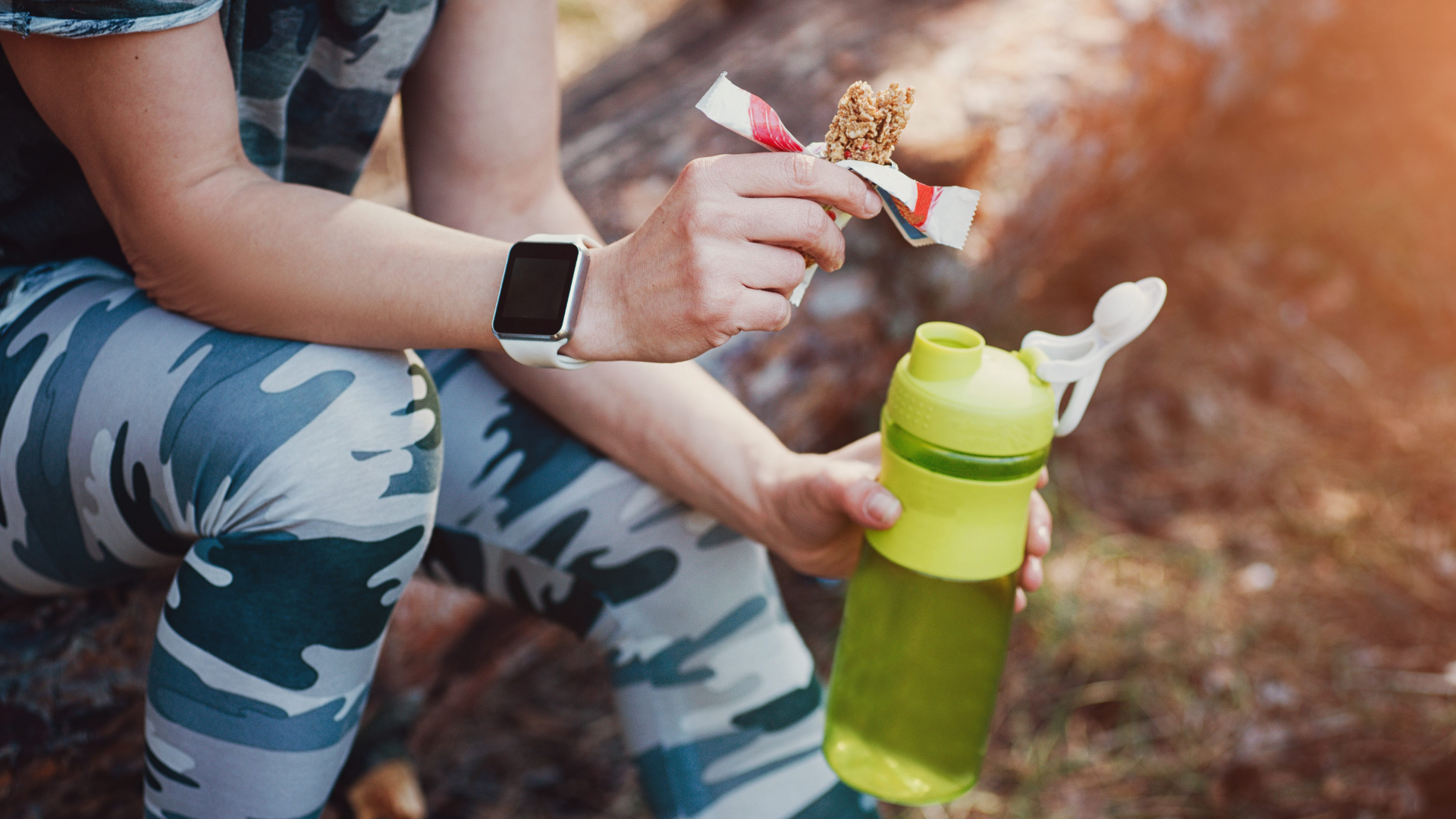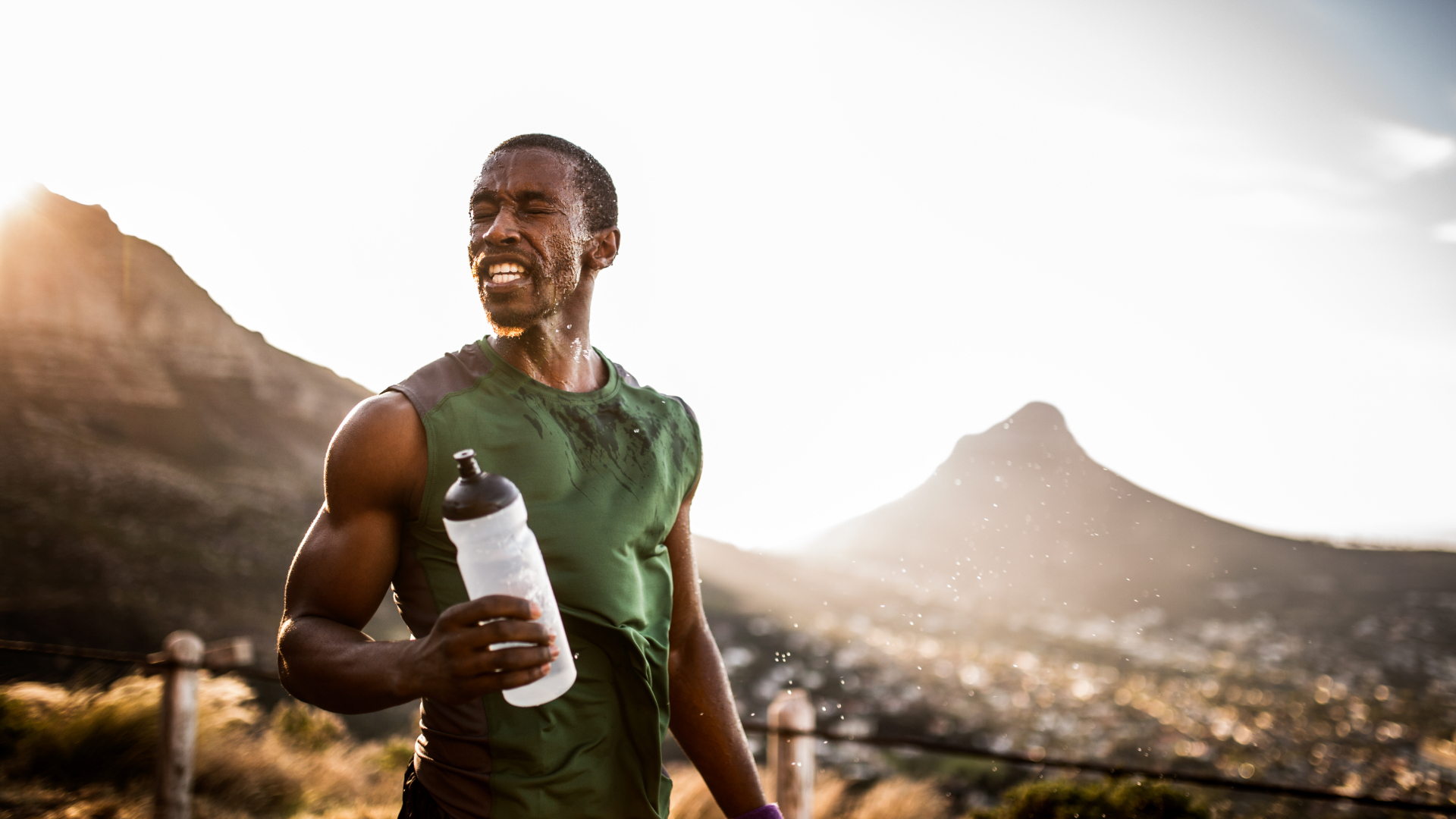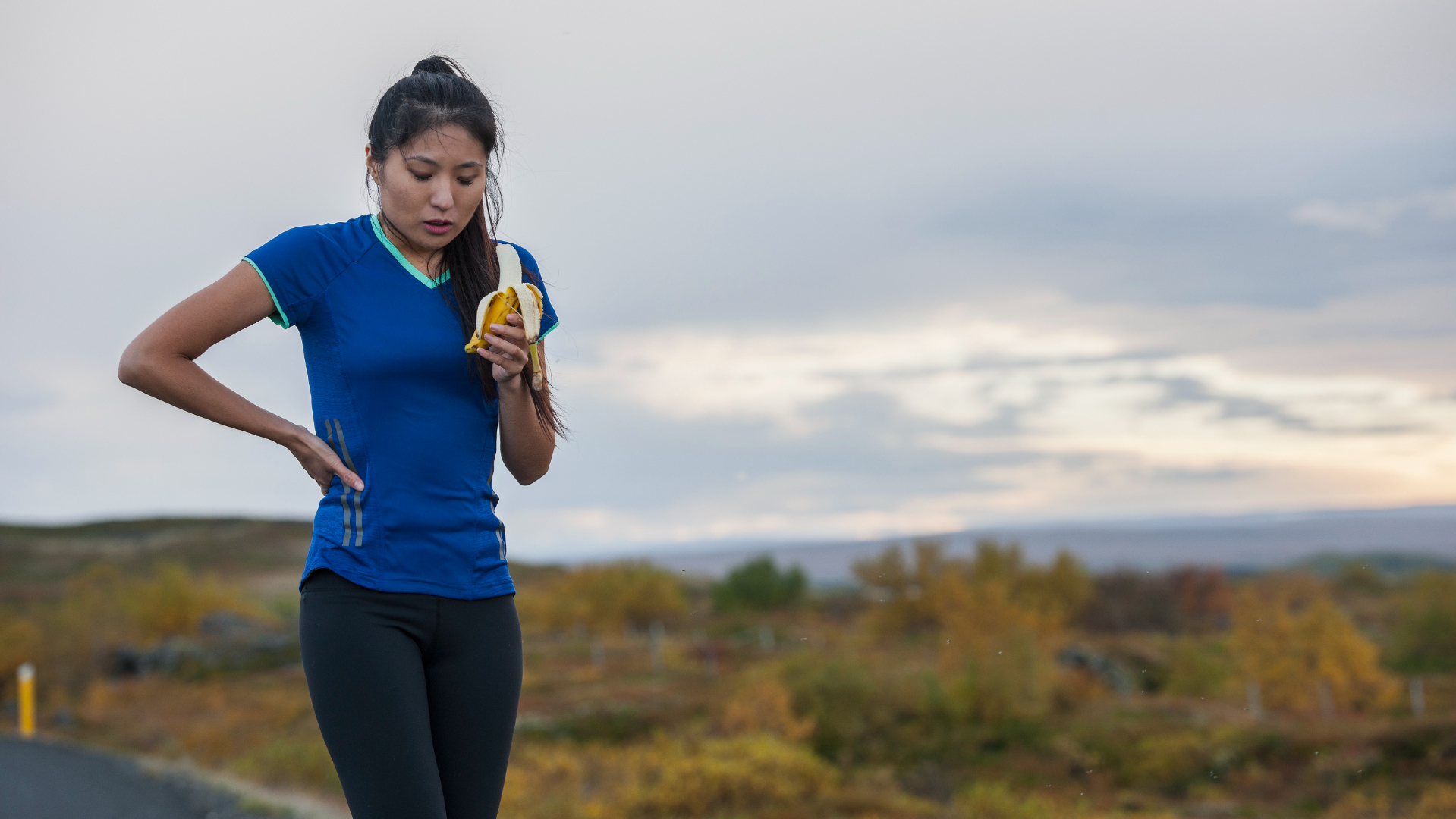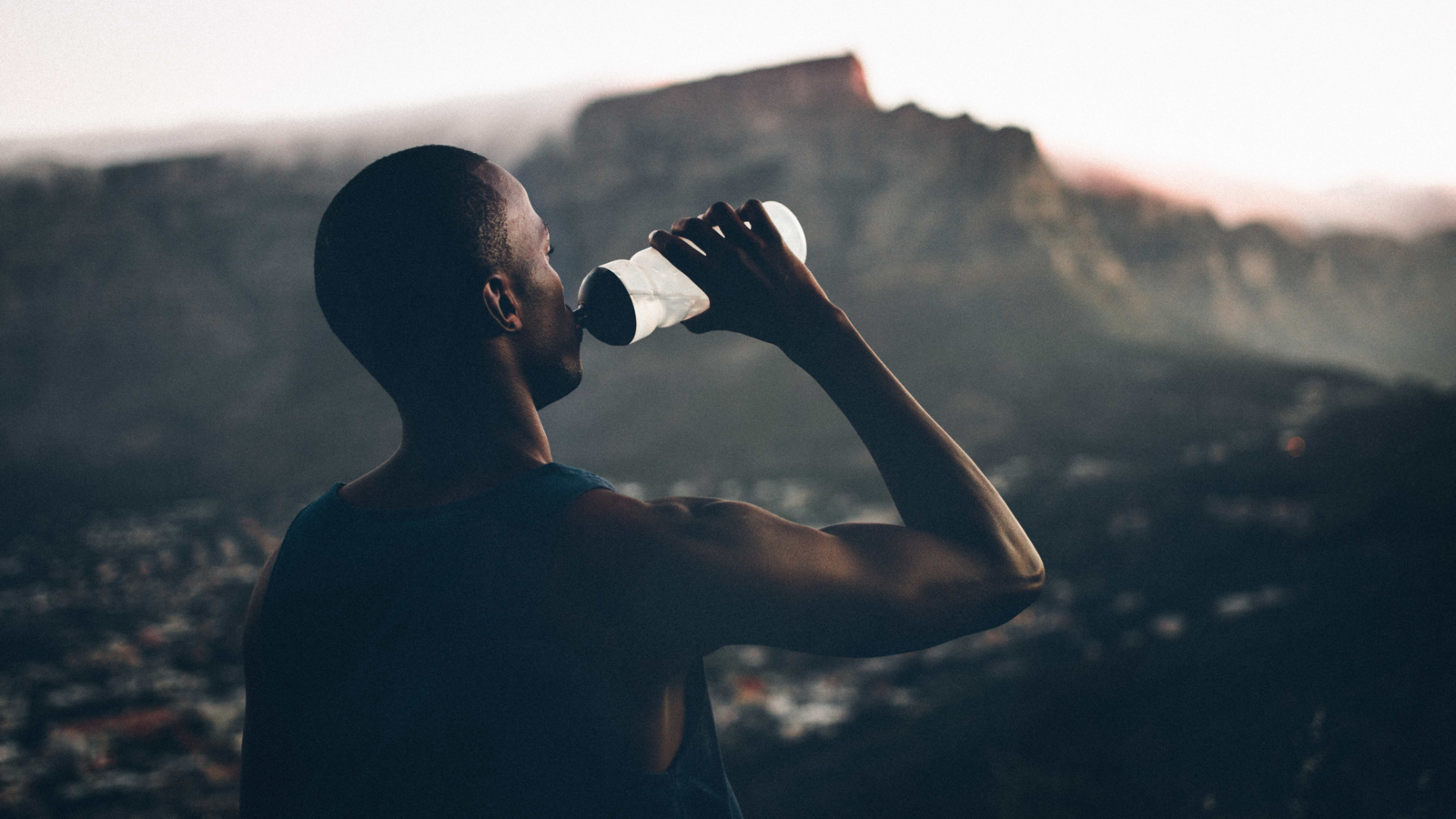What to eat while running: how eating and drinking at the right time can improve your runs
Knowing what to eat while running can improve performance, efficiency and happiness – as a top sports nutritionist explains

Your body is an incredible engine, but after about 90 minutes of exercise your muscles will run out of stored glycogen. That's why you need to think about what to eat while running.
For starters, you will need to start topping up with carbohydrate-rich snacks. The need to rehydrate on longer runs and races is well known, but if it’s really warm you might want to take a drink on shorter runs too.
Eating the wrong things during a run can lead to stomach upsets – anything from mild cramping to full on vomiting and diarrhea. And if you don’t take anything at all – or too little – you might bonk. So here are some ideas for the best things to take on the trails with you, and what to consume and when, from sports nutritionist and author of The Runner’s Cookbook, Anita Bean.
You can also check out our guides to what to eat before running and what to eat after a run.
Practise first
Eating and drinking on the move is different for each individual runner – some swear by a bacon sandwich and pizza on long runs, while others can only exist on energy drinks and the odd gel.
Anita explains, “During exercise the body diverts blood from the digestive system to the muscular system, making it hard to process large amounts of food while you’re running. Or, if digestion does start, it might deprive muscles of the blood they need to keep pumping and pushing you along.”
Your body will soon let you know what it can and can’t process, so it’s essential to test out many different options and gradually work out what suits you best. Anita advises, “This is especially vital if you’re attempting a long-distance race like a half marathon, marathon or ultra. Always try out nutrition ideas in training rather than on race day.”
All the latest inspiration, tips and guides to help you plan your next Advnture!

How often to eat
If you eat a healthy, balanced diet most of the week, you won’t usually need to eat on runs under 90 minutes long, but if you’re heading off for two hours or more, it’s time to take snacks.
Eating little and often works best for most runners. Anita advises, “Start at about 30 - 45 minutes in, aiming for 30-60g of a carbohydrate (for example a gel, part of an energy bar or a few jelly babies) every half-hour or so. You don’t have to be super strict with these amounts and timings, but do remember to eat at regular intervals rather than leaving it hours and getting seriously depleted.”
Anita says: “You might not get hungry during a really long run, which does make it harder, but taking small bites regularly keeps your blood sugar levels topped up nicely, avoiding sudden surges and crashes.”
Especially if you’re running for many hours, you will need savory snacks as your palate will become tired of only sweet foods. Anita says, “Take non-squashable, un-meltable, easy-to-digest foods that you will look forward to eating (trail mix and small waxed-covered cheeses for example) and have them handy in the front and side pockets of your running vest for easy access on the go.”
- Don't just think about your stomach! Your feet are important too – so check out the best trail running shoes on the market

What to eat
You don’t have to buy specialist sports nutrition. Bars, gels and chews are usually more expensive but they can be easier to carry, more convenient and last longer. However, traditional kids’ party food also works brilliantly and can do wonders for morale. Again, a mix of sweet and savory is best to keep your palate entertained.
Sports nutritionist Anita Bean advises the following:
Gels – Very handy for getting some carbs and electrolytes into your system quickly and easily, without the need to digest any solids, which diverts blood from your hard-working muscles. Obviously, they’re light and easy to carry too. There is a dizzying range of gels available, and the ingredients differ widely – some contain elements like caffeine that might not agree with you – so please do test them out while training.
Sweet ideas - Jelly Babies (or similar), dried fruit (try apricots, banana chips and Medjool dates, delicious!), jam and peanut butter white bread sandwiches, hot crossed buns with butter, homemade flapjacks (stuff them with all your faves like dark choc, nuts, seeds, honey, toffee pieces), homemade fruit cake (the denser the better to avoid crumbling on the trail).
Savory ideas - crisps (nice and salty!), cheese chunks (also nice and salty!), cheese and pickle white bread sandwiches, baby potatoes bagged with a little salt, mashed potato, mini pork pies and scotch eggs, veggie burgers, pizza slices, cream cheese croissants.
How often to drink
This varies massively from person to person due to different sweat rates and conditions on the day, but Anita recommends, “Aim to sip small amounts of fluid often during your run whenever you feel slightly thirsty to avoid performance-halting dehydration. Avoid forcing fluid down when you aren’t thirsty – humans can’t store it like camels can, and in the worst case scenario extreme over-hydration can lead to a potentially life-threatening condition called hyponatraemia.”
Anita explains, “Hyponatraemia means excess water has caused the salt concentration in the blood to fall dangerously, with symptoms like stomach ache, dizziness, nausea, bloating, and in very rare cases, total collapse and death. Don’t worry though – drink to thirst in small, regular sips, include some electrolytes during longer runs and in hot weather, and you should not need to be concerned about this condition.”

What to drink
Again, there is no need to buy the convenient but expensive energy powders or pre-mixed bottled drinks unless you prefer to.
Sports nutritionist Anita Bean advises the following:
Electrolyte drinks – great for runs longer than two hours. You lose salts in your sweat when you run, and some people lose more than others, so adding an electrolyte tablet or two to your water is a great way to replace this. (Or make your own from 500ml squash and a pinch of table salt.)
Isotonic drinks – most useful for runs over 60-90 minutes in hot, humid weather, these have the same concentrations of salt and sugar as your blood should have so they are rapidly absorbed into the body to help keep your blood sugar level. You can buy them ready made or make your own with 100ml squash 500ml water and a pinch of table salt.
Energy drinks – this is a tangled area, so ensure you experiment during training to see what works for you. Some energy drinks are loaded with caffeine, the benefits of which (stimulation) can be negated by side effects – increased need to go to the toilet (including diarrhea) and an increase in blood pressure. If you find an energy drink you’re happy with, though, it can work really well on longer runs of about 2 to 3 hours, as a way to consume energy-giving, simple carbohydrates without having to eat or eat as much. Avoid the cans, and instead look for energy drink powders, so you can add as much or as little as you like to your water bottle. Usually 30-45g carbs per 500ml water works well, and you might want to add a pinch of salt too if it doesn’t already contain this.
Keep it eco
Buying pre-bottled drinks and dedicated sports nutrition products all contribute to plastic waste, so whenever possible, make your own drinks and snacks. You can wrap snacks in old crisp packets, plastic packaging from other things like bread and wraps, reusable zip lock bags and small Tupperwares.
For more great pre-run snack, smoothie and meal ideas see Anita Bean’s best-selling book, The Runner’s Cookbook, containing over 100 delicious recipes to fuel your running. It's available to buy now on Amazon US and Amazon UK.
The co-founder and former editor of Trail Running magazine, Claire now runs the YouTube channel Wild Ginger Running, creating films about trail- and ultra-running advice, inspiration, races and gear reviews. An award-winning journalist, writing for outdoor and adventure sports magazines and websites, Claire's first book, The Ultimate Trail Running Handbook (5k to 50k), is out now. Her second, The Ultimate Ultra Running Handbook (50k to 100 miles), is out Autumn 2024. Claire also speaks and presents at events and races.

